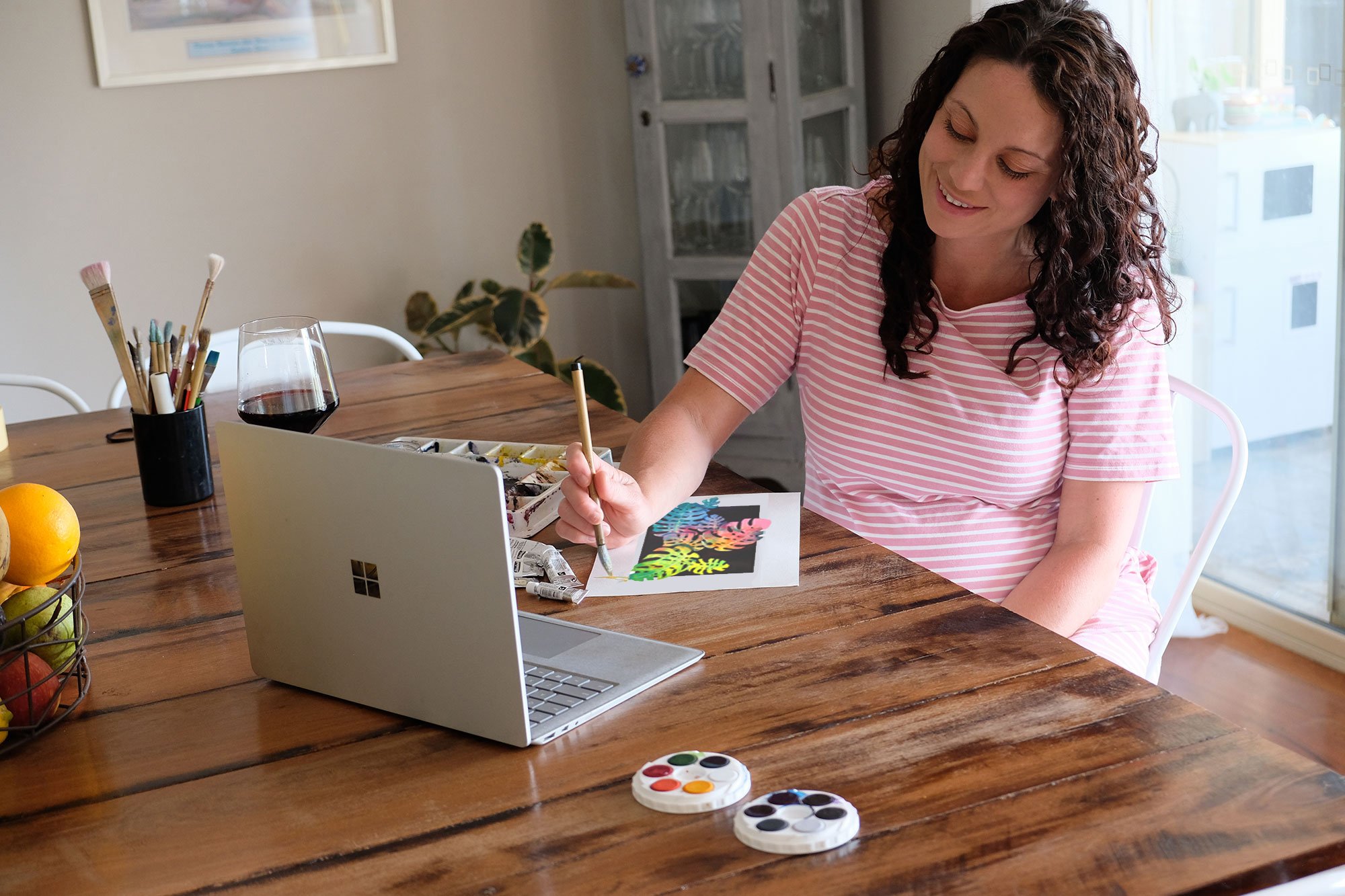Basic supplies to start your art journey: drawing and watercolour
What do I need to get started as an artist?
In this series of two articles, we’ll cover the basic supplies you’ll need for each kind of (basic) artistic endeavour. This week we’ll cover beginner’s drawing supplies and watercolour supplies. We offer art classes in Kingscliff on Tweed coast for both; just follow the links below to see our classes.
Beginner Drawing
Sketch book, of a size big enough to draw in but small enough to carry.
Tracing paper. This is useful if you’re starting with an outline of a photo and want to be specific.
A 2B and 6B pencil is often enough for casual or beginner sketching. But ideally, you'll build a set of various drawing pencils. Mechanical pencils can also be useful.
Eraser, the usual kind. Bonus: pencil/pen-shaped eraser, or grey mouldable eraser, for precision.
Sharpener, electric if possible.
A set of charcoals, or pastels if you like to play with colour.
Blending stumps, cotton or tissue for blending. Just use your fingers if you’re trying to keep your kit minimalist.
Coloured pencil set. Try to go a step-up from the cheapest available – they can be really poor quality.
Watercolour
Quality paper, preferably made specifically for watercolour painting. Normal paper will buckle under the water.
Watercolour paint. Watercolour paint comes in tubes, which are great for controlling the amount of paint you use, and ‘pan’ style, or cubes, which are great for travelling with. The latter can also be cheaper and more widely available.
Watercolour brushes. To start with you’ll want a small round brush and a medium-large round brush. These will allow a fair amount of control and various strokes. But if you can get a proper set, go for it. For more information I’ve written a whole watercolour brush guide on the brushes I recommend (and what not to buy).
Masking fluid. This stuff may not seem necessary, but it is a great tool to create astonishing effects and precisely control where your paint goes.
A palette. Usually a plastic watercolour palette, with deep wells for each colour as well as a larger mixing well. For more information I’ve written a whole article on watercolour palettes.
A jar for water. Hard and soft tap waters can have different effects - you can use bottled water if you’re worried about it.
Tissues or a small towel, to soak up excess paint and dry brushes. Or I use “artist budget tissue paper” aka toilet paper.
A board and block or easel to create an angled surface to work from. But a lot of artworks can be painted flat as well.
Watercolour pencils are a good alternative to paints and can be more precise, especially for beginners. You draw as if with coloured pencils then go over the finished piece with a damp paintbrush, or a water brush pen, which is a really cool tool to have available. Just don’t make the rookie mistake of dipping the pencils in water… (ahem).
If you’re looking for the ultimate drawing program, then you might be interested in The Artory Academy. It contains a full drawing course covering 6 fundamentals of drawing PLUS classes on perspective AND a daily drawing program which covers 30 days of quick 15 minute exercises designed to fast-track your drawing skills and get you drawing from life (not just photos).
